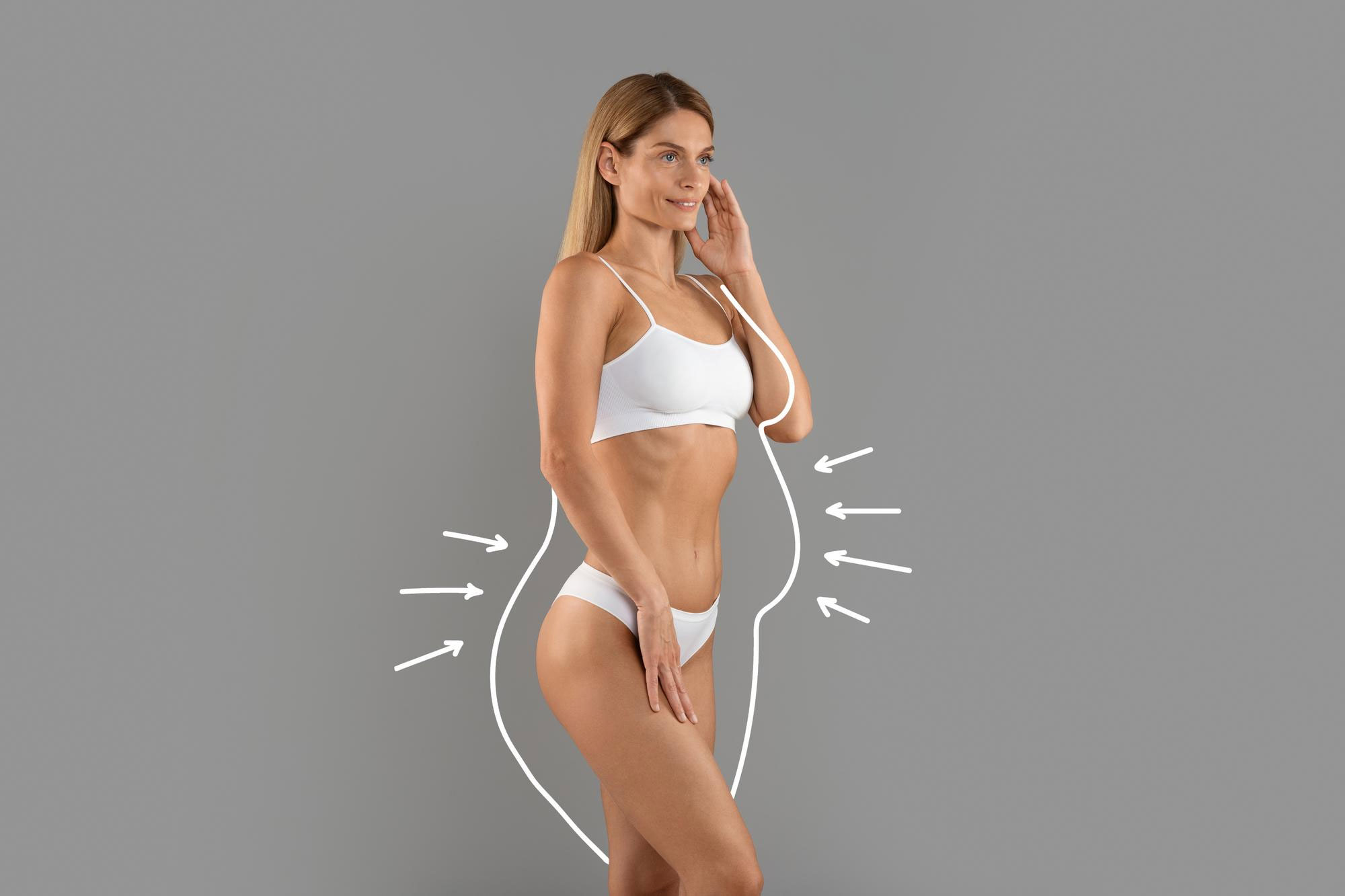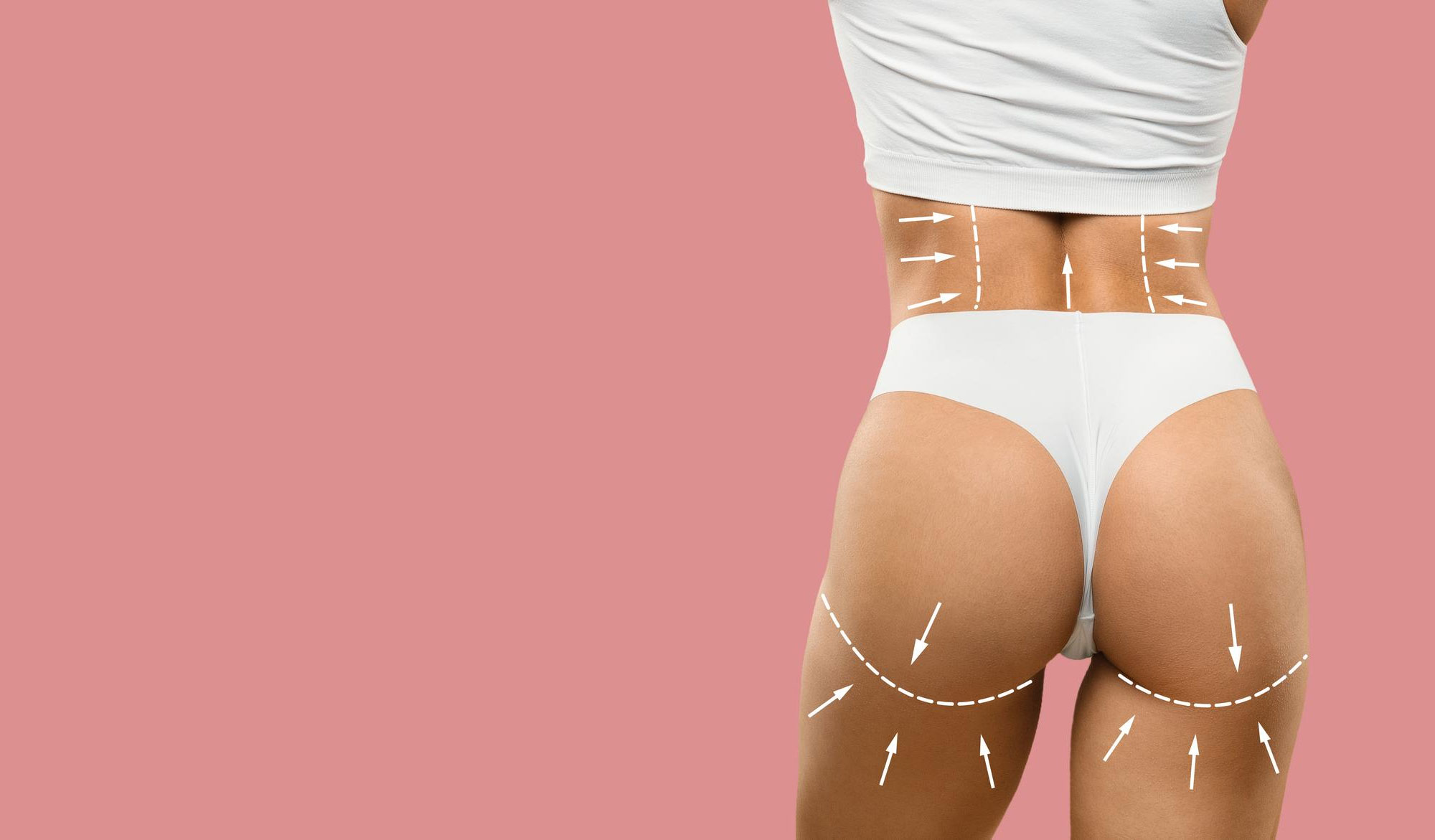What Exactly is a Brazilian Butt Lift (BBL)?
The Brazilian Butt Lift procedure is basically based on the injection of fat tissue taken from one's own body into the buttocks area. In this way, it is possible both to make the buttocks fuller and to achieve the desired thinning in certain parts of the body. For example, excess fat tissue around the abdomen or waist is extracted with the "liposuction" method and then transferred to the buttocks through special procedures. The key point at this point is that the fat injected into the buttocks is the body's own tissue, so a more natural result can be achieved.
In fact, at first glance, this method can be likened to the approach of killing two birds with one stone: Fat is removed from excess body fat, while the buttocks are volumized.The name "Brazilian Butt Lift" comes from the fact that Brazilian surgeons have played a pioneering role in body contouring in the past and the long-standing popular culture of buttock aesthetics in Brazil. Of course, although this operation is perceived as an "instant Brazilian look", the results vary from person to person as everyone's body structure is different.
Why Has This Surgery Become So Popular?
Brazilian Butt Lift has gained great popularity especially in the last decade with the influence of social media. Famous names that we often see on the internet or on television, drawing attention with their plump buttocks and fashion trends that emphasize the "waist-to-hip ratio" have increased the interest in this surgery. People now want to get closer to the so-called hourglass body shape by making their hips more prominent. Combined with the desire to feel better and look confident in clothes, BBL has become one of the most preferred aesthetic operations in many countries around the world.
In addition, compared to traditional buttock implants, the use of the body's own fat tissue in BBL strengthens the expectation of a more "natural" result. Compared to a synthetic buttock implant, a buttock filler made with the body's own fat is more attractive to many people in terms of both tactile sensation and appearance. For this reason, not only celebrities but also many people who are interested in aesthetics in daily life prefer this method.
How is a Brazilian Butt Lift Performed?
There are three basic stages of Brazilian Butt Lift surgery:
Liposuction: The first stage involves removing fat from areas of the patient's body where excess fat has accumulated. Areas such as the abdomen, flanks (flank area), and sometimes the hips or thighs are usually the preferred areas for fat removal. In liposuction, small incisions are made and excess fat tissue is sucked out with the help of thin cannulas. A special solution (usually called tumescent solution) is applied to control bleeding and pain.
Fat Processing (Purification): In order for the fat obtained by liposuction to be injected into the buttocks, it must first go through the purification process. In this step, the collected fat is separated from blood, excess fluid and similar substances. Centrifugal force (centrifugation) or special filtration systems facilitate this process. The goal is to obtain the highest possible proportion of viable and healthy fat cells.
Buttock Fat Injection: The purified fat is injected into the designated areas for shaping the buttocks. The surgeon evaluates the buttocks layer by layer and decides how deep and how much fat to inject. In this way, a natural look and feel is tried to be achieved. The surgeon's artistic eye is also of great importance here; because it is necessary to design the roundness and shape of the buttocks in harmony with the general body contours of the patient.
Who are Suitable Candidates for Brazilian Butt Lift?
Those who have too much fat to utilize "their own fat"
The most basic requirement for BBL is to have a sufficient amount of removable fat tissue in the body. If the person has a very thin body or very low fat percentage, the areas suitable for liposuction may be limited and sufficient volume of fat may not be obtained. In such cases, hip implants or combined methods may be considered.
People in Good General Health
Like any surgical intervention, BBL carries certain risks. It is therefore important to have a comprehensive health assessment before surgery. If there are serious health problems such as cardiovascular diseases, clotting disorders or if the person's general health is not suitable for surgery, this surgery may be postponed or canceled.
Smoking and Alcohol Use
Smoking has a particularly negative effect on tissue healing. It is recommended to reduce or, if possible, quit smoking after surgery for wound healing and fat graft adhesion. Similarly, excessive alcohol consumption can also affect overall health and the healing process.
Body Contouring Expectations
The person who is considering having BBL should clearly define their expectations from the surgery. In addition to adding volume to the buttocks, this procedure also offers the opportunity to shape the body. Therefore, additional benefits such as thinning of the waist and flattening of the abdomen can be achieved. However, it is important to remember that surgery is not a magic wand. Maintaining lifestyle changes such as a balanced diet and regular exercise after surgery is very important for permanent and beautiful results.
How Does the Recovery Process Proceed After Surgery?
The recovery process following Brazilian Butt Lift surgery is usually divided into several stages:
The First Days: After the operation, mild pain, edema and bruises may be seen as the effect of anesthesia wears off. These are expected conditions. Painkillers and antibiotics prescribed by the doctor help to increase comfort during this period.
First Weeks Most of the swelling in the surgical area begins to subside within 2-3 weeks. However, it may be necessary to wait a few months for the final shaping of the buttocks. In this process, it is recommended to avoid sudden movements and to take walks that will not strain the body.
Use of Special Corset and Pillow: A special corset is usually used for the recovery of the liposuctioned areas. It is also often recommended to use a sitting pillow to avoid direct pressure on the buttocks. These pillows help the fat graft to adhere by shifting the load from the buttocks to the thighs and knees.
Sitting and Sleeping Position: Especially during the first 2-3 weeks, it is recommended not to sit directly on the hip and to sleep in a prone or side position. For example, during short breaks during the day, it may be healthier to rest in a kneeling position or to support it with a lumbar pillow.
Regular Check-ups: Doctor checks should not be interrupted during the healing process. Each person's recovery speed may be different, so the process is evaluated individually.
What are the most common risks and complications?
No surgical procedure is completely risk-free and BBL is no exception. Knowing the risks and complications of the procedure is one of the most important steps in making an informed decision. The most common situations are as follows:
Fat Embolism: It is one of the most serious risks. If the fat is injected at the wrong level or the procedure is performed close to the vascular structures, fat particles can be mixed into the bloodstream and reach the lungs, which can be life-threatening. Therefore, the surgeon's technique and experience are of great importance.
Infection As with any surgery, there is a risk of infection. This risk is minimized by clean and sterile operating room conditions, antibiotic use and regular dressing.
Asymmetry or Uneven Result: Sometimes the retention rate of the injected fat in the body may be different or the method preferred by the surgeon during shaping may not meet the expectations of the person. In such cases, additional corrective interventions may be required.
Loss of Fat Tissue (Resorption): The body may absorb some of the injected fat over time. This rate varies from person to person and may affect the permanence of the surgical result.
Circulation Problems and Stitching Problems: After surgery, there may be problems with blood circulation, especially in the areas where liposuction was performed or around the buttocks. Wound healing may be prolonged, sutures may open or scars may become more prominent.
Are Permanent Results Possible?
The results of Brazilian Butt Lift surgery can generally be long-lasting; however, this depends on the person's lifestyle. As the body gains weight, the fat cells grow. If excess weight is gained or lost after surgery, the shape and volume of the buttocks may change. For this reason, a healthy diet and regular exercise in the postoperative period is the key to long-term results.
For example, fat cells are like seeds planted in a field. If you take good care of the soil and water regularly, your plants will thrive. Fat cells in the body similarly change shape according to your lifestyle choices. If you consume too many "caloric" foods and remain sedentary, the proportion you achieve with surgery may change over time. Therefore, adopting a balanced lifestyle after surgery is very important for the permanence of the result.
Are There "BBL" Alternatives?
There are methods other than fat injection in hip aesthetics. Especially in very thin individuals, hip implants may be considered because there is not enough fat tissue. These implants made of synthetic material are placed in the hip with the logic of a prosthesis and add volume. However, due to the stiffness of the implants and possible complications (capsular contracture, slippage of the prosthesis, etc.), many people prefer the natural fat injection method.
Some patients also prefer simpler fat grafting procedures to fill the hollows on the sides of the buttocks, the so-called "hip dips". Therefore, the best way to determine which method is appropriate is a comprehensive examination and clear expectations.
What should be considered before surgery?
General Health Check: It is recommended to perform tests such as complete blood count, ECG, chest radiography before surgery. In this way, a hidden health problem, if any, can be recognized early.
Medication and Supplement Use: Regularly used medications or nutritional supplements, especially those with blood thinning effect, should be questioned in the preoperative period and their use should be regulated in line with the doctor's recommendations.
Smoking and Alcohol Consumption: Quitting smoking in the preoperative period positively affects the healing process by increasing the amount of oxygen to the tissues. Alcohol may increase the risk of complications during surgery and anesthesia.
Realistic Expectations: BBL sculpts based on your existing body structure. If your goal is to achieve a completely different body structure in one go, you may be disappointed. How much fat can be removed, how much of it can be injected into the buttocks and the retention rates vary according to the individual.
What Should Be Considered After Surgery?
Sitting and Lying Position: In the first weeks, sitting and lying positions that put pressure on the hips should be avoided. Instead of sitting for long periods of time, standing up at regular intervals makes it easier to maintain healthy blood circulation.
Drink plenty of fluids and eat a balanced diet: It is important to get enough protein, vitamins and minerals to speed up the body's healing process after surgery. Drinking plenty of water also helps reduce edema.
Corset Use: It may be necessary to use a special corset (or medical garment) to reduce swelling and bruising in the areas where liposuction has been performed. This also helps to tighten the tissues and maintain the desired body shape.
Light Exercises: Heavy sports and activities that carry a risk of impact on the hip should be avoided for the first few weeks. However, light walks increase blood circulation and promote healing. At the time recommended by the surgeon, you can gradually move on to more intense exercises.
Regular Doctor Check-ups: Going to the control appointments determined in the postoperative period without interruption ensures that possible complications are detected at an early stage.


















